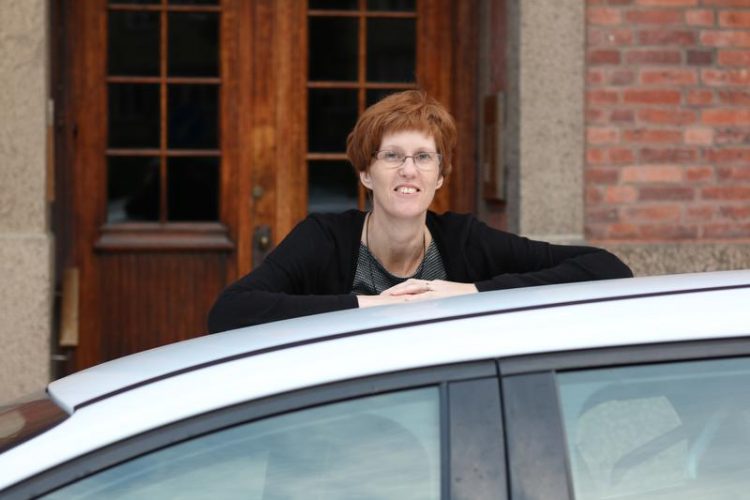Cars Must Be Considerate of the Driver When Talking

Jessica Villing Monica Havström
By putting real persons in regular cars and letting them drive around in Gothenburg while talking to each other, Jessica Villing has explored how the interaction between the driver and modern in-vehicle dialogue systems, such as navigation systems, can be improved in order to reduce the driver’s cognitive workload and therefore increase traffic safety.
Most experiments of this type are conducted in simulators, where drivers are given mathematical problems to solve while driving. But since this is not how it happens in real life, Villing wanted to know how a real conversation with a passenger affects us when driving a car.
‘Humans are good at reading people they’re talking to, so looking at how passengers and drivers interact provides a perfect model for tomorrow’s dialogue systems,’ she says.
The Dico project (dico is Latin for ‘I speak’) is a collaboration between the University of Gothenburg, Volvo, Telia Sonera and Veridict. In her research, Villing has looked specifically at how Dico can be made aware of and understand the cognitive burden imposed on a person while driving a car. As well as whether the burden can be attributed to the driving task as such or something else, like the driver’s interaction with a dialogue system.
‘The theory I propose is that it should be possible to interact with a dialogue system as if it were a passenger in your car who is able to see what you see and therefore can take external factors into account when communicating. Such as keeping quiet if heavy traffic makes the driver notably stressed and having a good feel for when it is a good time to talk and give instructions.’
The current systems are unaware of the traffic situation and will keep talking regardless of how ready the driver is to listen. Navigation directions are blurted out with a certain frequency but should perhaps instead be given when the driver actually needs the information, which can vary depending on both traffic and the driver.
‘When driving a car, you shouldn’t have to focus on anything but the actual driving task,’ says Villing, who often turns off the sound of the navigation system in her own car because she feels it can be distracting.
‘I would like to do the opposite, turn off the screen and only listen to the sound, if the interaction feels natural and the information is given when I’m ready to listen.’
Villings hopes that her study will help improve the voice control in cars by making it more intuitive and safer to use.
‘So that drivers will want to use the system and feel that it helps them, instead of forcing them to push buttons and look at a screen. This type of safety-oriented system would lead to fewer accidents,’ says Villing.
More information:
Jessica Villing, +46 31-3011817, email: jessica.villing@gu.se
http://hum.gu.se/english/current/news/Nyhet_detalj/?languageId=100001&conten…
Media Contact
All latest news from the category: Information Technology
Here you can find a summary of innovations in the fields of information and data processing and up-to-date developments on IT equipment and hardware.
This area covers topics such as IT services, IT architectures, IT management and telecommunications.
Newest articles

First-of-its-kind study uses remote sensing to monitor plastic debris in rivers and lakes
Remote sensing creates a cost-effective solution to monitoring plastic pollution. A first-of-its-kind study from researchers at the University of Minnesota Twin Cities shows how remote sensing can help monitor and…

Laser-based artificial neuron mimics nerve cell functions at lightning speed
With a processing speed a billion times faster than nature, chip-based laser neuron could help advance AI tasks such as pattern recognition and sequence prediction. Researchers have developed a laser-based…

Optimising the processing of plastic waste
Just one look in the yellow bin reveals a colourful jumble of different types of plastic. However, the purer and more uniform plastic waste is, the easier it is to…



